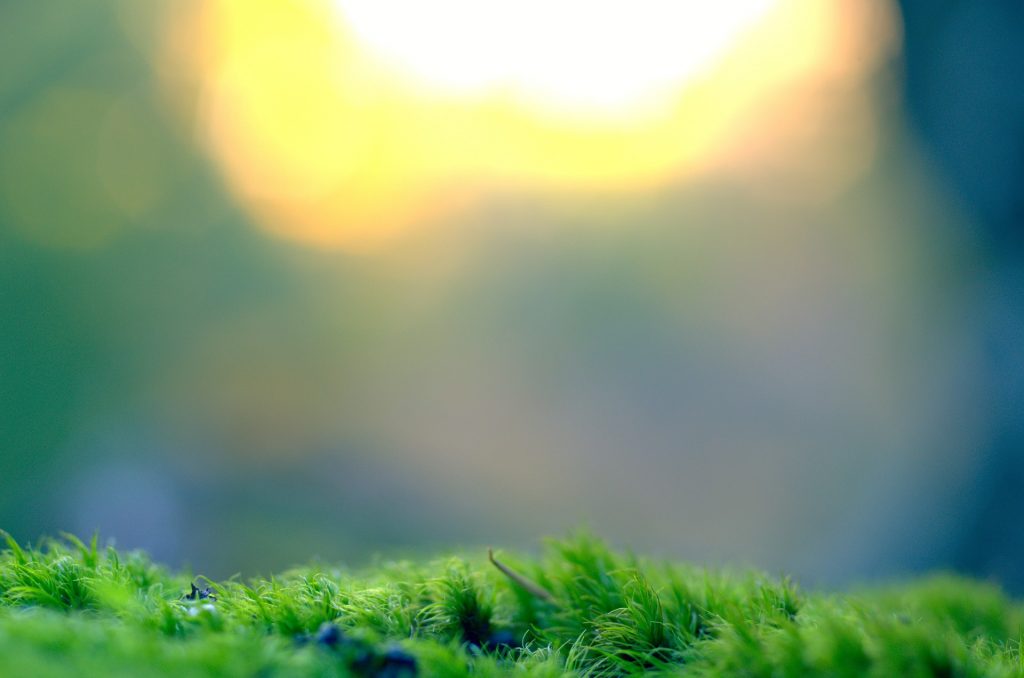
Have you ever looked out across your lawn and noticed thick patches of moss? While moss is not technically a weed, if you aren’t growing it on purpose, it may as well be one. Moss is a simple and ancient plant with a shallow root system. It is an opportunistic plant that will take hold wherever it can. In your lawn, that means moss will grow anywhere that your grass is not thick enough to crowd it out. Luckily, it is not very difficult to get rid of moss in your lawn. However, moss is a sign that your lawn needs more care than just removing the offending plant.
![How to Get Rid of Moss in Your Lawn [infographic]](https://theturfgrassgroup.com//wp-content/uploads/2020/05/How-to-Get-Rid-of-Moss-in-Your-Lawn-infographic.jpg)
Removing Moss from Your Lawn
Moss is a simple plant with shallow roots. In your lawn, it can act as a sort of groundcover, taking up space where your grass is thin. Luckily, its shallow roots make it relatively simple to remove. But removal is just the first step in total moss control.
Chemical Method
If you need to get rid of moss in your lawn, the first step is killing the living plant. If you visit your local garden store, you can easily find chemical herbicides that target moss. Many of these are iron-based products and can actually feed your lawn at the same time that they are killing the moss. Be sure to find a product specifically for moss. Herbicides for other weeds may not work on moss, and can also damage your turf.
The best time to apply an herbicide to control moss is when it is in its peak growing season. Since moss prefers damp, cool weather, its peak growth is usually spring and early fall. Of course, if you’ve missed the ideal season, it’s still not too late to apply herbicide. You should be able to kill moss with herbicide at any time of year.
Organic Method
If you don’t want to introduce herbicide into your yard or just want something you can do at home, there are two moss-killing solutions you can easily make at home. You can mix either gentle dish soap or baking soda with lukewarm water to create an effective DIY herbicide that will kill moss.
If you are using soap, mix 2-4 ounces with two gallons of water. For the baking soda method, mix 2 gallons of water with a small box of baking soda, the sort they sell for fridge deodorizing. Two gallons should cover 1000 square feet of moss-covered lawn. For a larger area, increase the amount of solution, maintaining the same ratios. Use a garden sprayer to apply a heavy coating of the solution to the moss. Try to saturate the moss for the best results. Don’t worry too much about your turf, as neither of these solutions should damage the surrounding grass.
After about 24 hours, the moss should die and turn orange or brown. Once the moss is dead, it should be easy to remove with a metal rake. Moss roots grow very shallow, so a rake should be able to remove the whole plant. Once you have collected the moss, dispose of it in sealed bags away from your lawn. Spores can still escape, carried by the wind, and reseed your lawn with more moss.
Keep Moss From Growing Back
Removing moss is easy, but it’s only the first step. To get rid of moss in your lawn and keep it from growing back, you have to change the conditions in your lawn that led to its initial growth. While soil conditions don’t necessarily cause or prevent moss from growing, moss growth is an indicator of some soil problems.
Manage Soil pH
Moss often grows in acidic soil, that is, soil with a low pH. You can bring a sample to your local cooperative extension to find the pH level of your soil. In Georgia, lab testing is available by county, under the auspices of the University of Georgia. Alternatively, many garden stores sell tests that can help determine the pH of your soil.
If your soil is too acidic, the most common remedy is to add lime. Lime is best added in the fall, so there is time for winter rain and snow to break up the lime and help it penetrate the soil. It can take months for the pH level of your soil to change significantly after adding lime. However, if you are having problems with your lawn at another time of year, you might try fast-acting lime, which is formulated to start working immediately.
Is Your Lawn Draining Properly?
A mat of moss covering your lawn could indicate poor drainage. Moss loves a moist environment. Also, if poor drainage is inhibiting healthy turf growth, moss can grow in the patchy areas where the turf is thin. To get rid of moss in your lawn, you need to resolve drainage issues.
Poor drainage may have several causes. First, the type of soil may not lend itself to adequate water drainage. Clayey soils typically don’t drain as well as sandier soils. If your soil is clayey, you can help improve the soil by aerating and adding humus or compost.
Heavy traffic is another contributing factor to poor drainage. If your lawn sees a lot of foot traffic—for example, from playing children or frequent garden parties—your soil is likely compacted. To test for compacted soil, try to stick a shovel into your turf. If the soil is not compacted, the shovel should easily sink six to eight inches into the ground; if it doesn’t, then your soil needs to be aerated. While you are digging into your turf, you can also check the depth of your turf roots. Healthy grass should grow roots four to six inches into the ground. If the roots are shallower than that, your grass isn’t healthy, and compacted soil is likely to blame. To aerate the soil, we recommend a core aerator, which you can rent at most garden or home-improvement stores.
If your lawn is collecting standing water when it rains, you may need to improve your drainage systems. First, find the spots where water is collecting and check for depressions in the soil. If an area of your lawn is flooding because it is lower than the rest of the lawn, filling in the depression with more dirt and leveling the ground can be an easy fix. If you still have drainage issues, consider installing a french drain to help direct water away from your lawn.
Is There Too Much Shade?
Moss is a shade-loving plant, which is the exact opposite of most turfgrass. So if you find that you are struggling against a carpet of moss, look up. Even shade-tolerant turfgrass—like fescue in cooler regions or zoysia grass in warmer climates—needs 6 hours of sunlight or 12 hours of partial sunlight every day. If you find that your grass is struggling to grow and moss is thriving, try reducing the shade. Selectively prune your trees, removing branches below eight feet. Also, thin out some of the canopy to allow more light to filter through. Alternatively, if you don’t want to give up the shade, consider turning the area into a bed with mulch or pine straw. You can also use a shade-loving groundcover other than turfgrass.
Growing Thick, Healthy Grass to Prevent Weeds
The best way to prevent weeds, moss, or anything else besides grass from taking over your lawn is to grow thick, healthy grass. The more deep-rooted and dense your grass is, the fewer nutrients and less water and light there are for competing vegetation. The best defense, as they say, is a good offense. Growing and maintaining a healthy lawn is the best way to beat out weeds.
To get a thick, healthy lawn, you need to start with top-of-the-line turfgrass. The varieties you’ll find at The Turfgrass group are exclusive to our Certified Grower network. We have scientifically perfected—and patented—the best of these grass families: Bermuda, Zoysia and Centipede varietals. So if you’re ready to take your lawn to the next level, consider turf from The Turfgrass Group. You can find a grower for any of our varieties right here.
